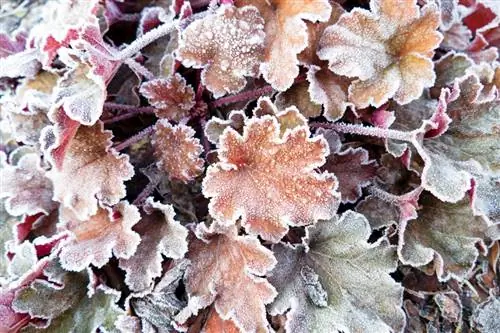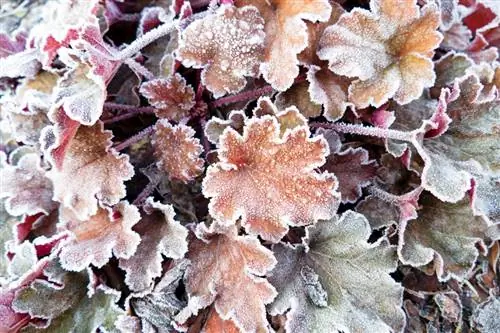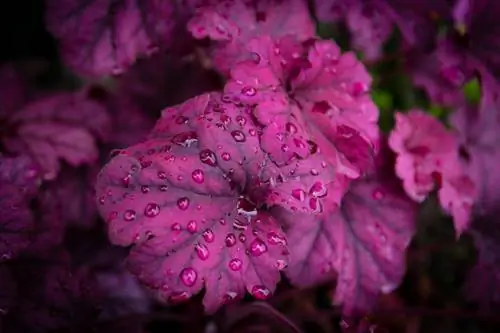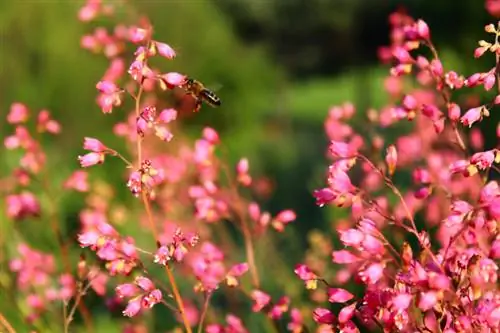- Author admin [email protected].
- Public 2023-12-16 16:46.
- Last modified 2025-01-23 11:20.
When autumn comes, it becomes clear which perennial has a prissy character and which has a robust character. What does the purple bell look like? Is it sufficiently hardy and can it cope without frost protection?

Is the purple bell hardy and does it need frost protection?
The purple bell is hardy with a winter hardiness of -20 °C and normally does not require frost protection. However, young plants or specimens in rough locations can benefit from being covered with brushwood or compost soil. Potted plants should be wrapped with fleece and placed in a protected place.
Good winter hardy in this country
You can rest assured: the purple bell is considered to be very hardy in this country. It survives normal winter times without any problems. Its winter hardiness is -20 °C. It is also worth knowing that this perennial is not only hardy and perennial, but also wintergreen to evergreen.
Cover outdoors if necessary
Usually the purple bell does not need any winter protection when it is outdoors. It can be left to its own devices and the frosty temperatures in winter without any effort. But sometimes it is still advisable to protect it.
- in rough locations
- when there is a cold frost
- young specimens (e.g. freshly sown)
- Specimens planted in late autumn
In these cases, the purple bell should be protected in winter. Brushwood is suitable for covering. Place pine brushwood over the root area of this plant! Alternatively, you can also use compost soil. This not only acts as winter protection over the root area, but also gradually penetrates to the roots as fertilizer.
Protecting purple bells in the pot
Even if the purple bell is in a pot on the terrace or elsewhere, it should be protected from frost in winter. Otherwise the planter will freeze right down to the roots. That would mean the end of the purple bells.
First, wrap the plant with fleece (€7.00 on Amazon). Next, place the planter in a protected location such as on the wall of the house. It is important that the plant stays outside. It should not be placed inside as it can cause growth damage there.
Before, during and after wintertime
You shouldn't forego certain care tasks when overwintering this perennial. The old flowers are cut down to the base. During the winter, the purple bells in the pot are watered sparingly. Once winter is over, remove the dry leaves of this perennial.
Tip
Since the purple bell also looks decorative throughout the winter with its colorful leaves, it should ideally be planted in a location that is clearly visible in winter.






